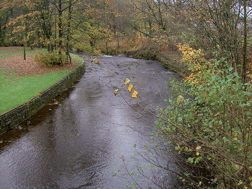 The impressive image on the outside front cover highlights a hot article from Hyo-Bang Moon and coworkers at Hanyang University, the National Fisheries Products Quality Inspection Service and the National Fisheries Research & Development Institute, Korea. Their study is the first to assess the methyl mercury residues and total mercury content in seafood consumed in Korea – an important constituent of the population’s diet. Their research found Hg levels to be below the threshold intake levels suggested by international authorities and thus will provide a baseline for future monitoring and risk management.
The impressive image on the outside front cover highlights a hot article from Hyo-Bang Moon and coworkers at Hanyang University, the National Fisheries Products Quality Inspection Service and the National Fisheries Research & Development Institute, Korea. Their study is the first to assess the methyl mercury residues and total mercury content in seafood consumed in Korea – an important constituent of the population’s diet. Their research found Hg levels to be below the threshold intake levels suggested by international authorities and thus will provide a baseline for future monitoring and risk management.
Exposure assessment for methyl and total mercury from seafood consumption in Korea, 2005 to 2008
Hyo-Bang Moon, Sang-Jo Kim, Hyejin Park, Yun Sun Jung, Suuggyu Lee, Yun-Hee Kim and Minkyu Choi
J. Environ. Monit., 2011, 13, 2400-2405
DOI: 10.1039/C1EM10504C
 The image on the inside front cover depicts another hot article from Hsing-Lung Lien at the National Tawain University with colleagues from the National University of Kaohsiung, Tawain. They have designed a zero-valent copper nanoparticles for the hydrodechlorination of 1,2-dichloroethane.
The image on the inside front cover depicts another hot article from Hsing-Lung Lien at the National Tawain University with colleagues from the National University of Kaohsiung, Tawain. They have designed a zero-valent copper nanoparticles for the hydrodechlorination of 1,2-dichloroethane.
1,2-DCA is a raw material used in vinyl chloride monomer (VCM) and polyvinyl chloride (PVC) manufacturing processes, and improper handling has lead to groundwater contamination in many places. As 1,2-DCA can cause circulatory and respiratory failure, and is a suspected carcinogen, remediation technologies are needed to deal with this contaminant. The authors hope their copper nanoparticles could be immobilised on the surface of reducing metals to form a reactive bimetallic structure for environmental remediation applications.
Catalytic hydrodechlorination of 1,2-dichloroethane using copper nanoparticles under reduction conditions of sodium borohydride
Chang-Chieh Huang, Shang-Lien Lo, Shin-Mu Tsai and Hsing-Lung Lien
J. Environ. Monit., 2011, 13, 2406-2412
DOI: 10.1039/C1EM10370A
Interested? Why not view the rest of Issue 9?
















 Assessing exposure is an important aspect of complying with the EU
Assessing exposure is an important aspect of complying with the EU  Andrea Tapparo and colleagues at the University of Padua, Italy, have developed a fast method for analysing neonicotinoid insecticides using UHPLC-DAD. The method was used to analyse the insecticide content of guttation drops on corn seedlings. Guttation is the formation of xylem droplets on leaves – often confused with dew – and has recently been proposed as a mechanism for the exposure of detrimental doses of insecticide to honey bee populations.
Andrea Tapparo and colleagues at the University of Padua, Italy, have developed a fast method for analysing neonicotinoid insecticides using UHPLC-DAD. The method was used to analyse the insecticide content of guttation drops on corn seedlings. Guttation is the formation of xylem droplets on leaves – often confused with dew – and has recently been proposed as a mechanism for the exposure of detrimental doses of insecticide to honey bee populations.